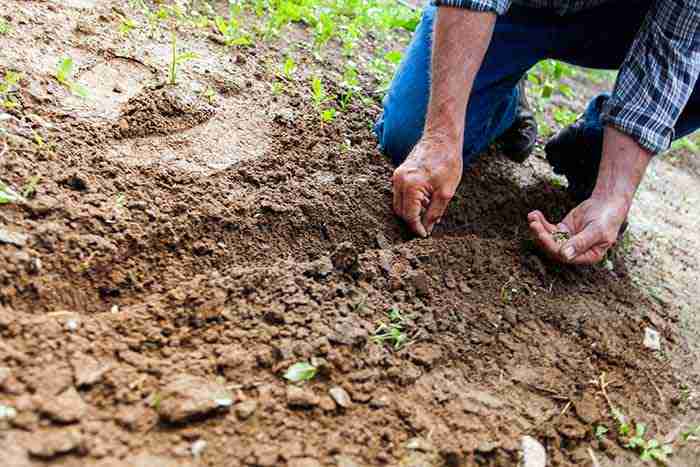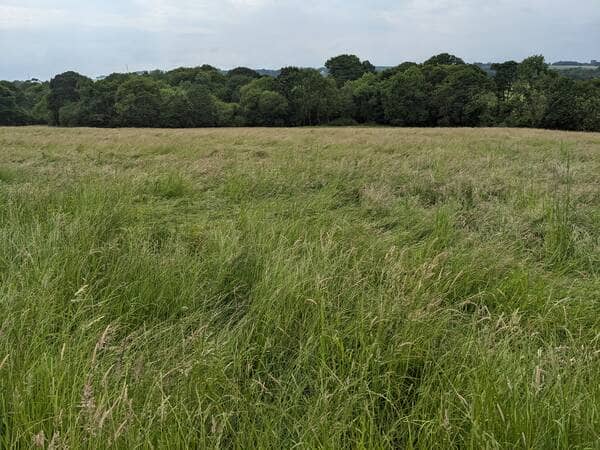Microbes. Microscopic organisms that live absolutely everywhere on the planet – from the ocean floor to the highest levels of the atmosphere. And those that live in soil – as tiny as they are – can have a huge effect on your plants.
In just a teaspoon of soil, you can find hundreds of nematodes, thousands of protozoa and algae, up to a million fungi, several million actinomycetes, and almost half a billion bacteria! But what do all these miniscule microbes do in your garden?
Let’s take a look at some of the more common types of soil microbes and how they affect the nutrients in your garden.
What are soil microbes?
Each of the 5 types of microbes – actinomycetes, bacteria, fungi, nematodes, and protozoa – has a different function in the soil but they all help to boost the health of your soil and – ultimately – of your plants.
Actinomycetes
Actinomycetes are a type of bacteria that had once been considered fungi as they have similar characteristics and effects on the soil. Some soil-based actinomycetes are predators that will harm the plant but others can act as a sort of antibiotic.
In fact, the popular antibiotics streptomycin, neomycin, erythromycin and tetracycline – used to treat anything from bacterial infections, to bronchitis, pneumonia and tuberculosis – are all produced by actinomycetes.
Bacteria
Bacteria are the smallest organisms in soil apart from viruses – and the most abundant as well. they are a crucial part of the soil workforce. As the final stage in the process of breaking down nutrients and releasing them to the root zone, bacteria may well be the most valuable of all the life forms found in the soil.
These microscopic marvels have very simple cell structures with no internal organs of any kind. And yet bacterial colonies in the soil can greatly influence the weathering breaking down of minerals – and the amount of nutrients available for your plants.
The overall composition of the soil can determine the number of bacteria growing there. Areas with an abundance of minerals typically have a higher concentration of bacteria. Up to 10 billion bacterial cells inhabit each gram of soil in and around plant roots, in a region known as the rhizosphere. These bacteria can also form aggregates which help to increase the overall health of the soil.
Fungi
Some of the most recognizable fungi are mushrooms, but many tiny forms of fungi make up parts of your garden soil. Like bacteria, fungi live in the areas surrounding the roots and help to make soil nutrients available to plants. Unlike bacteria, fungi thrive in acidic environments.
And because most fungi consume organic matter for nutrition, the quality and quantity of organic matter in the soil has a direct correlation to the growth of fungi.
Nematodes
Nematodes are microscopic worms that live around or inside plants. While some nematodes are predators, others can be quite helpful as they eat disease-carrying nematodes and carry nutrients to the plants.
Protozoa
Protozoa are some of the largest microbes; they tend to surround themselves with bacteria as they typically eat them. In fact, nutrients that are eaten by bacteria are released back into the soil when protozoa eat the bacteria.
Protozoa are generally split into three categories: amoebae, ciliates, and flagellates.
Amoebae
Amoebae are slug-like microbes that are larger than flagellates and move in a different way. All Amoebae use a pseudopodium, a type of “false foot” with a slime-like consistency, to pull themselves along surfaces. The pseudopodium also helps to pull in food.
Ciliates
Ciliates are the largest of the protozoa group, and they move by beating their cilia – small, short hairs covering the protozoa. The cilia can move in different directions to move the organism which makes it more maneuverable than flagellates or amoebae.
Flagellates
Flagellates are the smallest members of the protozoa group, and can be split into two types: some contain chlorophyll and are typically found in aquatic environments; those without chlorophyll – the green pigment that absorbs sunlight – are not capable of photosynthesis and are the type more commonly found in soil.
These microbes are distinguished by their flagella, long branch-like appendages which are their means of movement.
Why are microorganisms important?
Microorganisms help to break down organic matter, and carry nutrients and water to our plants. And the decaying organic matter provides the microbes with energy for their growth carbon for the formation of new cells.
As microorganisms help break down organic matter, they release essential nutrients and carbon dioxide into the soil, and help transform nutrients into mineral forms that plants can use.
As these microbes move through the soil, they also aerate it, helping to improve soil drainage and soil structure.
Living soil filled with microorganisms is one of the most valuable ecosystems on earth – it helps to regulate the climate, mitigate droughts and floods and filter ground water.
What about unhelpful microbes?
A funguslike unicellular organism named Phytophthora infestans, responsible for potato blight and other crop diseases, has caused famines throughout history. Other fungi and bacteria cause the decay of roots and leaves.[6]
Many strains that seemed promising in the lab often failed to prove effective in the field, because of soil, climate and ecosystem effects, leading companies to skip the lab phase and emphasize field tests.[6]
Fertilizers deplete soil of organic matter and trace elements, cause salination and suppress mycorrhizae; they can also turn symbiotic bacteria into competitors.[6]
How do soil microbes affect nutrients?

In addition to making nutrients and minerals in the soil available to plants, microbes can also produce hormones that spur growth, stimulate the plant’s immune system, and control its response to stress. In general, soil with several types of microbial life produces plants with fewer diseases and a higher yield.
Metabolize chemicals
Some soil bacteria can metabolize chemicals and fertilizers, making the nutrients available to the soil.
Bacteria are also responsible for the process of nitrogen fixation, which is the process through which nitrogen from the atmosphere is converted into nitrogen-containing compounds (such as ammonia) that can be used by plants. Almost every plant requires nitrogen in some way.
The biggest role of fungi in the soil is as a food sources for other, larger organisms; they can also form beneficial symbiotic relationships with plants or other organisms which improves the overall soil health.
For example, Mycorrhizae are fungi that enable water and nutrient uptake by the roots and plants, which provides them with sugars, amino acids and other nutrients.
How can you encourage beneficial microorganisms in your garden?
Soil microorganisms need the same things we do to thrive: food, water and oxygen. We can help encourage the growth of beneficial micro-organisms in several ways:
Adding compost to your garden
Microorganisms need lots of organic matter to thrive and adding compost to your garden will ensure they have a steady supply of organic matter.
Planting in cover crops to provide food for the living soil
Keeping your soil well watered because microbes thrive in moderate temperatures and moist soils. If your soil is left bare and dry, high temperatures may kill the microorganisms.
Avoiding physical disturbances
When soil is disturbed – such as through tilling or compaction – it can disrupt the structure of the soil and the habitat of the micro-organisms living there.
Mulching your beds with organic matter like leaves or pine needles
This helps to retain moisture in the soil and adds organic matter back into it.
Avoiding pesticides
These chemicals can devastate entire populations of micro-organisms in our soil.
Choosing organic fertilizers such as compost and manure which release nutrients into the soil over time and don’t leave long term residues like many chemical fertilizers.
Summary
So, to sum it up, an entire ecosystem of tiny organisms is living in your garden right now. They are helping your plants to feed, grow, and thrive. Who would believe that something so small would have such a huge impact on your garden?



